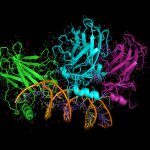Link to Pubmed [PMID] – 38009333
Link to HAL – pasteur-04315132
Link to DOI – 10.15252/embj.2023113761
EMBO Journal, 2023, pp.e113761. ⟨10.15252/embj.2023113761⟩
Abstract Tunnelling nanotubes (TNTs) connect distant cells and mediate cargo transfer for intercellular communication in physiological and pathological contexts. How cells generate these actin‐mediated protrusions to span lengths beyond those attainable by canonical filopodia remains unknown. Through a combination of micropatterning, microscopy, and optical tweezer‐based approaches, we demonstrate that TNTs formed through the outward extension of actin achieve distances greater than the mean length of filopodia and that branched Arp2/3‐dependent pathways attenuate the extent to which actin polymerizes in nanotubes, thus limiting their occurrence. Proteomic analysis using epidermal growth factor receptor kinase substrate 8 (Eps8) as a positive effector of TNTs showed that, upon Arp2/3 inhibition, proteins enhancing filament turnover and depolymerization were reduced and Eps8 instead exhibited heightened interactions with the inverted Bin/Amphiphysin/Rvs (I‐BAR) domain protein IRSp53 that provides a direct connection with linear actin polymerases. Our data reveals how common protrusion players (Eps8 and IRSp53) form tunnelling nanotubes, and that when competing pathways overutilizing such proteins and monomeric actin in Arp2/3 networks are inhibited, processes promoting linear actin growth dominate to favour tunnelling nanotube formation.










